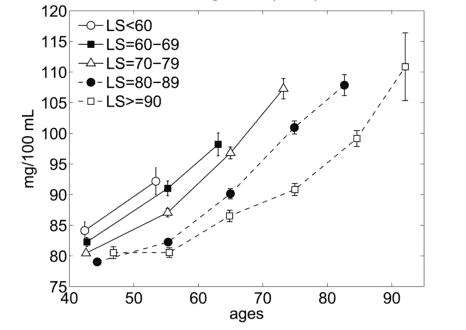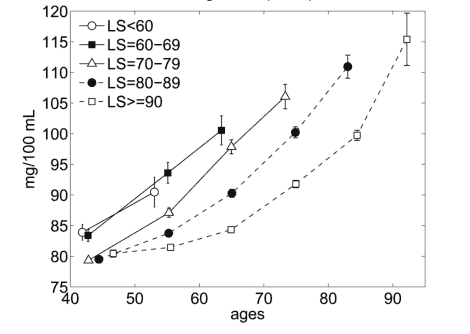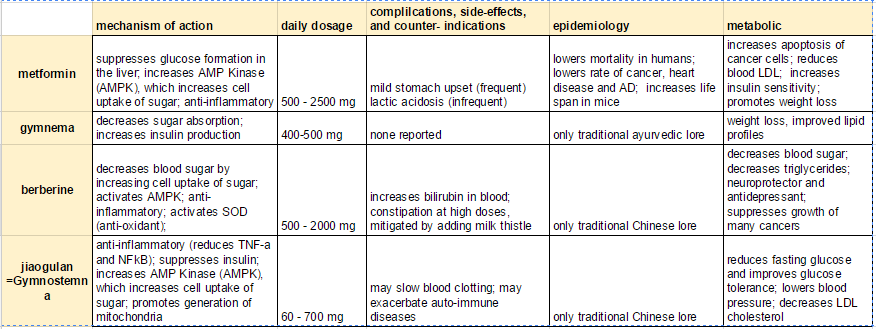Do These 2 Anti-aging Pills Really Work? Part 2

Two anti-aging pills that are FDA-approved and may prove to extend the lifespan of humans are Rapamycin and Metformin. In Part 2, we’ll examine Metformin, learn what the current science says about it and find out if you should try it now.
Metformin is the second FDA-approved drug that’s being examined for its anti-aging properties, and is the subject of Part 2 of this two-part series about how it and Rapamycin might be able to make you live longer and healthier.
{If you haven’t already, go read Part 1}
Metformin has enjoyed a long history of beneficial use by diabetics and is now being examined for its anti-aging properties.
In this article, we'll cover:
- A brief history of Metformin;
- The symptoms of aging that Metformin might impact;
- The FDA Metformin “green light” for anti-aging studies;
- Should use Meformin?; and
- Eight Metformin substitutes you can use now.
Let’s dig in…
A Brief History of Metformin
Metformin is an anti-diabetic biguanide drug. Biguanides are oral type 2 diabetes drugs that work by preventing the production of glucose in the liver. They can improve the body’s sensitivity towards insulin and reduce the amount of sugar absorbed by the intestines. The only available biguanide medication is Metformin. (1)
Metformin has been available in Europe since 1957, and was approved in the U.S. in 1995, so at this point the drug has been widely used to treat diabetes for nearly 60 years.
Before Metformin, an anti-diabetic drug with a very similar chemical structure called “Phenformin” was commonly used, but discontinued in the United States by the FDA in 1977 due to the number of deaths in diabetic patients caused by lactic acidosis.
These deaths were invariably due to the continued use of Phenformin by diabetics who had compromised kidney or liver function. No deaths were ever reported in patients who had normal kidney and liver function.
Many Diabetologists lamented the Phenformin ban at the time because most diabetics on the drug experienced lower blood sugar, lower insulin, reduced blood cholesterol and triglycerides, improved immune function and weight loss. (2)
Turns out that Metformin has very similar beneficial metabolic effects to Phenformin, but is much safer and is now being tested on humans for its potential anti-aging properties. Dr. Nir Barzilai, the Director of the Institute for Aging Research at Albert Einstein College of Medicine, is currently engaged in a clinical study and assessment of Metformin for endurance, to analyze how it may affect metabolic and cellular processes correlated with the development of age-related conditions. (3)
These conditions include:
- Inflammation,
- Oxidative stress,
- Diminished autophagy,
- Cell senescence, and
- Apoptosis.
Scientists are reviewing whether Metformin use can possibly improve the gene expression profile in older adults with damaged glucose tolerance to that of younger individuals.
What is known is that Metformin increases the number of oxygen molecules released into a cell, and this appears to boost robustness and longevity. It works by suppressing glucose production in the liver and increasing insulin sensitivity, therefore benefiting patients with type 2 diabetes. (3)
Symptoms of Aging
Before we continue with our Metformin story, let’s remember that all of the above bulleted conditions are symptoms of aging.
Inflammation
Chronic, low-grade inflammation is a phenomenon called “inflammaging”, and is an attribute of human aging, as most if not all age-related diseases share an inflammatory pathogenesis. (4)
Two blood tests that measure inflammation are called “C-reactive protein” (“CRP”) and “Erythrocyte Sedimentation Rate” (“ESR”or “sed rate”).
This graph clearly shows the “sed rate” perpetually increases as we age:
Oxidative Stress
Mitochondrial dysfunction and the accumulation of oxidative damage to macromolecules are believed to play key roles in the aging process. The mitochondria are the so-called “energy factories” inside cells within which the biochemical processes of respiration and energy production occur. Mitochondria specific to heart function can accumulate oxidant-induced damage and become a major contributing factor to the age-related alterations in heart function. (5)
Given that heart disease is the number one cause of death in the Untied States — accounting for one in every four deaths – it seems prudent to reduce oxidative damage in the mitochondria.
Diminished autophagy
Regular readers regularly bump into “autophagy” on this site. It’s been covered in at least three articles; namely:
- Part 1 of this two-part series,
- 11 Ways To Increase Your Lifespan, and
- How You Can Age Better Than Your Parents Did.
Simply put, autophagy allows the orderly degradation and recycling of cellular components. When autophagy is diminished, unwanted debris accumulates in cells and interferes with proper cellular function. The better your body can clean out such debris from the cells, the more vibrant they will be, and the healthier and longer will you live.
The inhibition of autophagic capacity that occurs with aging can increase chronic inflammation (6) and can negatively affect the capacity of the pancreas to produce insulin. (7)
Cellular senescence
Cellular senescence is a state of irreversible growth arrest, meaning that cells lose the ability to divide. The so-called Hayflick limit indicates that cells can reach a maximum of 50 cell divisions before becoming senescent, whereupon they can no longer replicate, but remain metabolically active and commonly cause several unsavory pathological issues – inflammation among them. (8)
Two general models explain how cellular senescence may contribute to aging (9):
- First, senescent cells in tissues may accumulate to the point where the strength and functional capacity of tissues are compromised.
- Second, senescence in stem cells limit their regenerative potential, eventually leading to a progressive loss of tissue strength and functional capacity.
Apoptosis
Apoptosis, also known as programmed cell death, is a regulated process that takes place throughout life and serves to eliminate necessary or damaged cells. Age-related diseases such as Alzheimer disease and Parkinson’s disease have been linked to an increase in apoptosis whereby cells that might otherwise continue to support proper tissue functioning are eliminated. (9)
Metformin Gets the FDA Green Light
To analyze the advantages of Metformin outside the realm of diabetes treatment, the FDA has green-lighted a clinical a double-blind, placebo-controlled trial in the U.S. called the Targeting Aging with Metformin study.
The researchers will give Metformin to about 3,000 elderly people, who either suffer from or have a high risk of developing diseases like cancer, heart disease, or cognitive problems. They’ll then track them over six years to see if the drug prevents aging-related diseases that were not pre-existing. They’ll also be looking to see if it prevents diabetes and lengthens life spans. (3)
All this caught the eye of the media. Here are a few quotes from worldwide news resources as reported by Life Extension Magazine:
- “Although it might seem like science fiction, researchers have already proven that the diabetes drug metformin extends the life of animals, and the Food and Drug Administration in the US has now given the go-ahead for a trial to see if the same effects can be replicated in humans.”
- “I have been doing research into aging for 25 years and the idea that we would be talking about a clinical trial in humans for an anti-aging drug would have been thought inconceivable…20 years ago aging was a biological mystery. Now we are starting to understand what is going on.”
- “Scientists think the best candidate for an anti-aging drug is metformin, the world’s most widely used diabetes drug, which costs just 10p [15 cents] a day. Metformin increases the number of oxygen molecules released into a cell, which appears to boost robustness and longevity.”
- “If we can slow aging in humans, even by just a little bit, it would be monumental. People could be older, and feel young.”
- “This would be the most important medical intervention in the modern era, an ability to slow aging.”
Not to be undone, Dr. Simon Melov of the Buck Institute for Research on Aging said (10):
You’re talking about developing a therapy for a biological phenomenon which is universal and gives rise to all of these diseases. And if you’ve got a therapy for this thing, these diseases just go away.
The Life-extending Effects of Metformin
Dr. Ward Dean penned a scholarly, graph-riddled article that he named, Metformin Update: Still the Most Effective Anti-Aging, Life Extension Drug, with a Broad Range of Benefits: Anti-Cancer, Cardioprotective, and Anti-Obesity. Step by step, Dr. Ward shows us how insulin resistance, hyperinsulinemia, obesity and aging are related.
He then details what he, among many, think are the life-extending effects of Metformin, beginning with studies on nematodes, then to mice; and finally speaks to weight loss and cancer inhibiting attributes of the drug.
Like graphs? Then go read Ward Dean’s article.
Here’s another two for you that show the inverse relationship between blood glucose levels and lifespan for both men and women (11):
Male Glucose Levels and Age

Female Glucose Levels and Age

As you can see from the figures above, blood glucose levels increase with age, even for long-lived individuals (LS > 90 indicates lifespan over 90, etc.). However for both genders, there’s an inverse relationship between glucose level and lifespan. Long-lived people have the lowest blood glucose level overall, even though it slowly increase with age in this population until approximately 55 years, whereupon it starts increasing more rapidly (steeper curve).
According to the American Diabetes Association, a FPG (“Fasting Plasma Glucose”) between 100 and 125 mg/dL is prediabetic, and numbers above that are solidly in the diabetes camp. (12) Similar diabetes associations, such as Diabetes In Control, puts the safe ceiling at 87 mg/dL (13)
Clearly, studies in mammals have demonstrated that hyperglycemia and hyperinsulinemia are important factors in aging and cancer. Of course, we humans are the gold standard, but we know that inactivation of insulin/insulin-like signaling increases lifespan in nematodes, fruit flies, and mice. We also know that life-prolonging effects of caloric restriction are in part due to reduction in IGF-1, insulin, and glucose levels. Antidiabetic biguanides such as Metformin, which reduce hyperglycemia and hyperinsulinemia by decreasing insulin resistance, extend lifespan, and inhibit carcinogenesis in rodents. (14)
This is all pretty cool for worms, mice (and even some monkeys), but the BIG, yet unknown question is: Will Metformin increase lifespan in humans?
The time is getting close at hand when we will know.
Should You Take Metformin?
Maybe.
Lean toward “Yes”, if you:
- Are pre-diabetic, or
- Have type 2 diabetes,
- Can get a doctor to prescribe it, and
- Do not have type 1 diabetes, Hashimoto’s thyroiditis, lactic acidosis (often caused by congestive heart failure, kidney impairment, and liver problems), metabolic ketoacidosis; or recently suffered a heart attack, stroke or have recently undergone surgery or are severely dehydrated. (15)
Lean toward “No” if, like me, you are hale, but want to add to your regimen of ant-aging, healthspan increasing stuff.
Don’t despair if you’re in the “No” column for reasons we will next explore.
Eight Metformin-replacing Supplements
I wrote about six of the eight already.
In Get More Sex and A Longer Life, I presented the following table of six supplements that support healthy blood glucose levels, and thereby may have a salutary effect on human aging:
Six Supplements that Support Healthy Blood Sugar Levels
| Supplement | Form | Quick Facts |
| Indian Gooseberry(Amla) | Powder or Capsule | It can work better than prescribed medicine at less cost and with no side-effects. |
| Berberine | Capsule | Studies present compelling data that show Berberine to substantially reduce blood sugar, triglycerides and cholesterol. |
| Fenugreek | Powder, Liquid, Cream or Capsule | Reduces blood sugar spikes by providing fiber and other chemicals that slow digestion. |
| Wellbetx PGX Plus Mulberry | Capsule | A specific brand consisting of a water-absorbing fiber and mulberry extract, which reduces after-meal rises in both glucose and insulin levels. |
| Chromium | Capsule | Many people are deficient of this metallic element that serves to regulate blood sugar, and help insulin transport glucose into cells where it can be used for energy. |
| Carnosine | Capsule, Lotion | One of the best “longevity supplements” with a long list of health attributes, including reducing AGEs. |
{Note: Do not take these if on diabetic medicine and/or insulin unless recommended by your doctor.}
I could have added two more to the table, Gymnema and Jiaogulan, both worthy of examination. We’ll check these out thru the lens of Josh Middledorf per his blog post, Can Botanicals Replace Metformin?
Gymnema
Gymnema has a long pedigree through the Indian Ayurvedic tradition of life extension. In the West, Dr. Matthew Leach and associates conducted a systematic review of the literature and a discussion of the best available evidence on Gymnema, and concludes that the clinical efficacy of gymnema has only been supported by a small number of nonrandomized, open-label trials, but that they indicate Gymnema may be useful in the management of diabetes and the prevention of associated pathological changes, such as chronic inflammation, obesity, enzymatic defects, and pancreatic cell function. (16) (Check it out on Amazon.com)
Jiaogulan
I drink Jiaogulan tea because it tastes great and Chinese lore says it can improve health. (Jiaogulan is also referred to as “Gynostemma”.) Josh Middledorf adds a few more benefits aligned with Jiaogulan’s capacity to boost AMPK, or denosine monophosphate-activated protein kinase. AMPK is a cellular enzyme that helps mimic the beneficial effects of calorie restriction, the best-documented method of slowing and reversing biomarkers of human aging. (17) (Check it out on Amazon.com)
Josh Middledorf also wrote about Berberine and Metformin, and put together this useful table that summarizes the basics:
Your Takeaway: Rapmycin and Metformin
In Part 1, we examined how Rapmycin, and FDA-approved drug, impacts the cellular growth regulator, mTOR (inhibits it), and cellular autophagy (exhibits it), leading to lifespan extending possibilities. We concluded that a healthy person should not yet take Rapmycin for anti-aging effects because there are side effects, and the drug needs further study in humans.
Here in Part 2, we took a look at another drug, Metformin, which is not only approved by the FDA as a treatment for diabetes, but has also been given their approval to study it for potential anti-aging effects. Like with Rapamycin, the possible life extension properties of Metformin are likely to involve the same metabolic pathways influenced by the biochemical impacts of caloric restriction.
Apart from taking Rapamycin and Metformin, you can:
- Consume 30% less calories overall (“CR”).
- Practice Intermittent Fasting to mimic the effects of CR.
- Take one or more of the supplements (herbs) herein reviewed.
Keep your eyes peeled to this site for more information that will undoubtedly spring from the numerous studies conducted on these two drugs.
Last Updated on November 8, 2022 by Joe Garma




